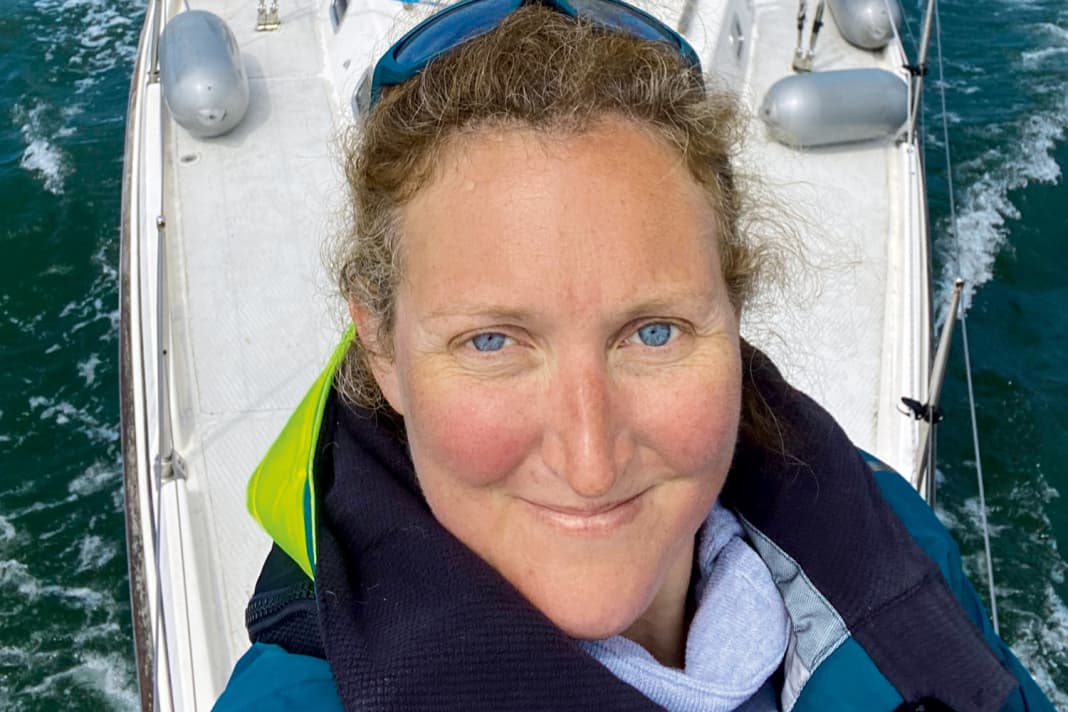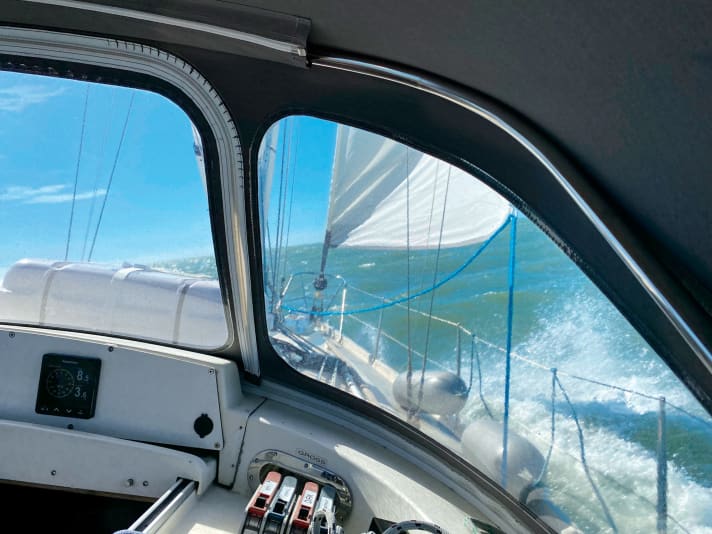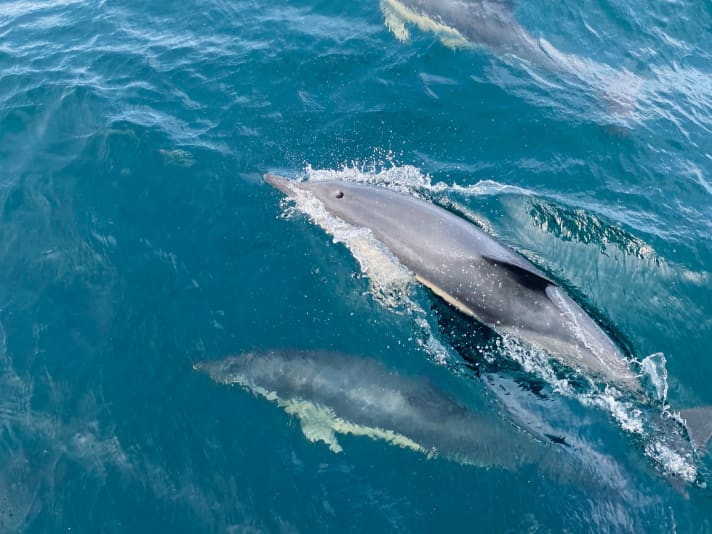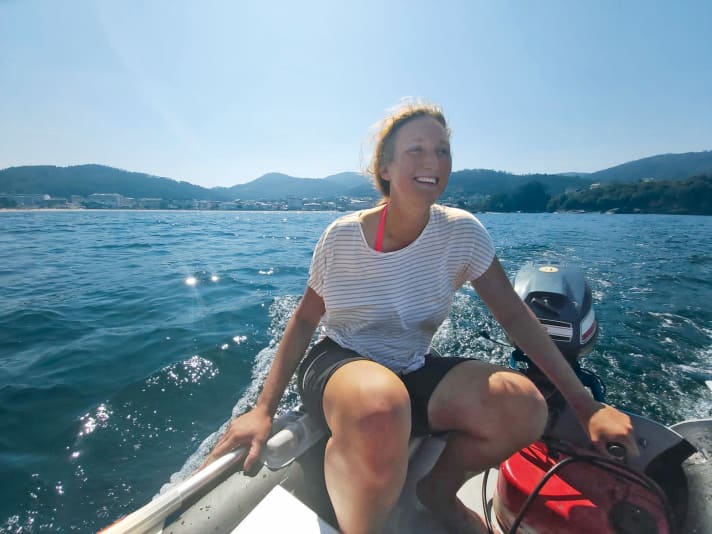Boatoffice: How to work, live and travel on board - interview with single-handed sailor Saskia Kaden






The 40-year-old Kaden is an agile coach, advising others on how to be flexible, mobile and efficient in today's world. She herself now works from aboard her Contest 34 "Robulla" during the summer months. She has refitted the boat in recent years and sailed single-handed from the Netherlands to the Mediterranean.
In return, it is recognised by the Cruiser Division (KA) of the German Sailing Association was awarded the Gudrun Calligaro Prize, which recognises special achievements by women in cruising sailing. We spoke to the passionate solo skipper about her sailing career and the hurdles, but also about the appeal of sailing alone.
YACHT: Mrs Kaden, what does the award you recently received mean to you?
Saskia Kaden:From my perspective, what I do is no longer anything outstanding. But when strangers came up to me at the award ceremony and said: "It's so cool what you're doing", I realised that it really is.
And what is so "crass" about your trip?
I started sailing late in life. I sail single-handed as a woman. And I work full-time from on board. That's nothing special on its own. But in this combination it is perhaps rather rare.

Well, let's start with sailing: How did you get into it?
My father died in 2015, which was the first reason for me to reorganise my life and my priorities. At the time, I met a now very good friend who told me about sailing. He works a lot in winter and goes on long sailing trips in summer. That sounded like a good way for me to combine work and a leisure activity. I didn't want to wait until I retired to experience something. The problem: apart from two short trips during my childhood, I had no sailing experience at all.
But that hasn't stopped you from turning your life around, has it?
Yes, that's right. I started sailing lessons on Lake Unterbach in 2016. When my mum died a year later, it was even more of an incentive for me to continue on this new path. But I was probably also overconfident at first.
Cocky? What was that characterised by?
With my newly acquired inland navigation licence, I thought I was pretty smart. But then I sailed hand against bunk and helped with the transfer of a yacht from Warnemünde to Lelystad. I learnt a lot in the process - including the fact that there was still plenty of room for improvement in terms of my sailing skills. However, after obtaining my sports coaster licence in 2017, I felt confident enough to take on more. So in 2018, I sailed an aged Neptun 22, which was in barely afloat condition, across the IJsselmeer and over to Texel. In hindsight, that was probably very risky.
Some people expressed reservations - mainly men who didn't know me well."
And how did you learn to sail so well so quickly that you were able to sail your own yacht across the English Channel and Bay of Biscay to the Mediterranean?
If you want to learn to sail, you often hear the saying that you should just do it. That's also true. But for me, it's more important to know how far you can go. I have learnt to leave my comfort zone again and again and to expand my skills bit by bit. The hand-against-jelly trips were good for this, but it works even better with your own boat. Even if some people initially advised me against it.
Why?
My friends all agreed that I needed my own boat. Others, however, expressed reservations - mainly men who didn't know me well. It started with the question of whether I could even maintain a boat on my own, financially and technically. I was told I should start with a dinghy first, and why it had to be such a big boat with the Contest 34, with headroom and two cabins. These are typical questions and opinions that you hear as a woman. I had deliberately decided in favour of this boat

For what reason? What is special about the contest?
It is extremely stable. The experience of many long-distance travellers has shown that this type of boat can take anything. I also fell in love with the drawer cabinet below deck and the cosy aft cabin.
How far can I go to leave my comfort zone, test my limits and learn new things?"
And how did you deal with the criticism of your project?
Criticism awakens in me the ambition to prove that I can do it. I do that on the road too. For me, two boats are a regatta, so I develop sporting ambition. That's why I sail my boat relatively well, I think.
And I mean single-handed. Do you like travelling alone?
Basically yes. I already sailed the dinghy single-handed during my sailing licence training because I didn't have the time or inclination to look for a sailing partner. I have a lot to do with people in my job. However, I tend to be introverted and socialising with people drains my energy. So I need my periods of solitude and I can cope on my own - an important prerequisite for single-handed sailing. It's also very helpful to have confidence in yourself. I always play through different scenarios in my mind and never sail off with just one option, but always have a plan B and C. And I'm not really travelling alone. I have lots of good advisors with whom I swap ideas.
But nobody is there at sea at the latest.
Correct, that requires some compromises. When you're alone, there are no parallel processes, only serial ones. That means you have to prioritise. You have to drop one thing in order to take hold of another, or realise that something is breaking in one place but you can't take care of it because a lot more could break elsewhere.
Do you sometimes reach your limits when sailing single-handed?
Absolutely, yes. I think I've mastered my boat quite well by now. I'm just still nervous when mooring. But the crossing of the Bay of Biscay was not a pleasant experience: I set off excitedly, I felt queasy and I couldn't eat anything. I was in a downward spiral towards seasickness - for the first time in my life. It lasted for two days. At a certain point, turning back was no longer an option. I only felt better when I had land in sight. That would definitely have been easier if I hadn't been travelling alone. On the other hand, I have the utmost confidence in the "Robulla". The boat can do anything; the weak point is me. Knowing that helps immensely.

How did you actually prepare your long journey?
Quite simple, because despite all the planning, I was able to set off rather spontaneously. I bought the "Robulla" in 2019 and wanted to refit it by 2022. For my 40th birthday, I wanted to take a sabbatical and do the classic Caribbean tour. But when the coronavirus pandemic made it possible to work remotely, it was my chance to sail alongside my job. I didn't have to wait for the sabbatical. Instead, I sailed to Cherbourg bit by bit after work and at the weekends in 2021, then took a relaxed three-week holiday back.
Why go to France?
Because I woke up one morning in Stavoren on the IJsselmeer and had a craving for a real French croissant. I was on a boat - so what could be more natural than to set off? That was a good test trip, from which I brought back some ideas for improvements to the boat, which I implemented in winter storage. I then set off on my current trip in the summer of 2022, very quietly, without a big farewell party.
You do a lot of work on your boat yourself. Where and how did you learn to do this?
Even as a child, I went on strike at nursery school because I would rather work at the workbench with the boys than play with dolls. Seriously, the fact that I not only travelled hand against bunk, but also helped in the winter camp, meant that I learnt a lot. It may sound nerdy, but it was also very useful for me to work through "seamanship".
The boat can handle anything, I trust it completely. It carries me everywhere. The weak point is me!"
You will come across every topic once and get a good overview of what to expect with your own boat. English sailors also like to say: "Everything on your boat is basically broken, the only question is when it becomes noticeable." My contest showed me this clearly in the summer of 2020 with a broken mast. I learnt that I had to look very carefully everywhere. Among other things, I deliberately redid the electrics on my "Robulla" myself; I wanted to know which cable ran where. The only thing I was pragmatic about was the engine; I had a new one fitted. Now, if something breaks while I'm travelling, I use the Internet or have the right books if I need to help myself. I always enjoy working on the boat because I can see what I've achieved at the end of the day. It's very different from my job, for example.
How does working from on board work?
Technically, it's very simple: I have a small 4G router for internet reception, which I connect to my on-board power supply via an adapter. Depending on the country, I then buy unlimited internet access for relatively little money. There have only been three places on the trip so far where the mobile phone network was not sufficient to start a video conference. But then you just sail one bay further. I also do what other working people do in the harbour in the evening: shopping, cooking, washing up and watching Netflix.

And everything always goes smoothly?
Basically yes. It just takes a bit longer to get to the next place by dinghy and on foot. In contrast to a classic long-distance trip, I also have to organise my trips around my working day. This was particularly challenging in the English Channel, when I had to take into account not only the wind and office hours, but also the tides. Sailing in your free time is much less complicated. It was also frustrating at times: I had meetings while all the other crews around me were setting off. I sat there and waved after them. You get to know a lot of sailors along the way and some of them become friends. When they sail on while you're sitting at your computer, you part ways; at some point you don't catch up with them. These farewells are painful.
What are your plans now?
Next summer I would like to sail along the coast of Italy and then via Sicily and Sardinia to Corsica. From experience, I can manage 1,500 nautical miles in a season. At some point I might take a sabbatical and sail to the Caribbean. At the moment, however, I don't feel the need to make the trip across the Atlantic. It's very nice in Europe. There are many places here that I would like to return to.

